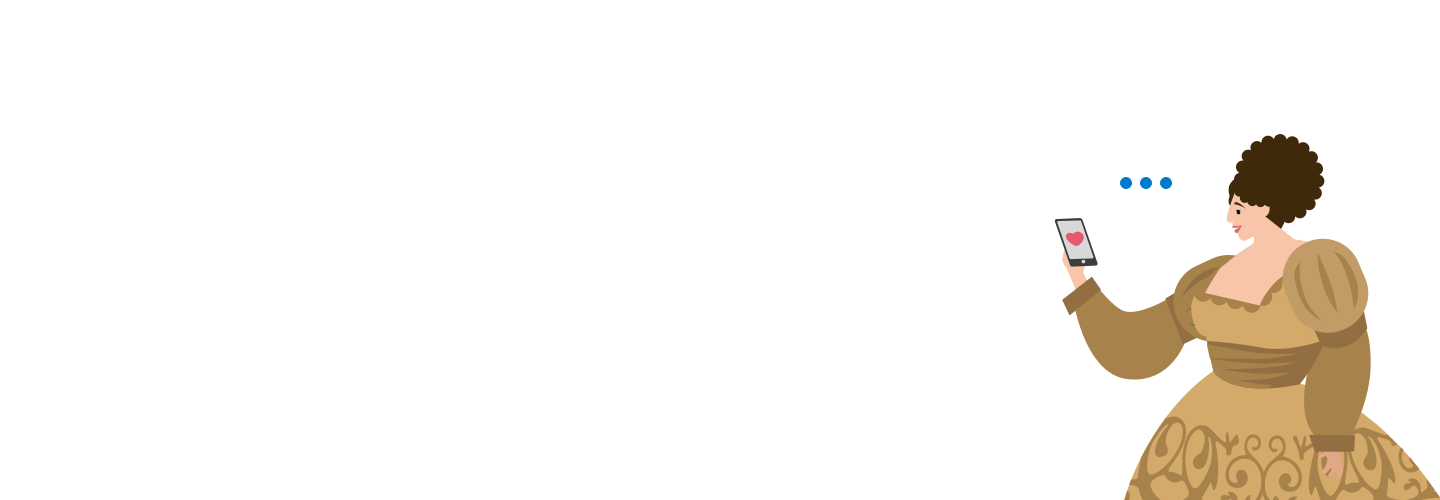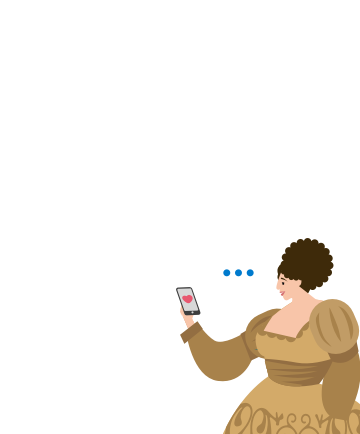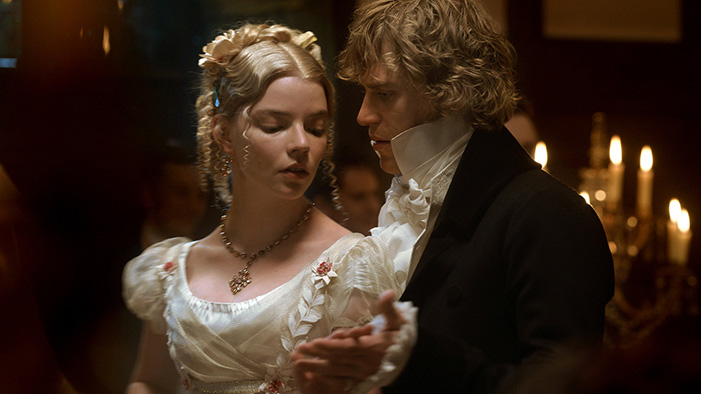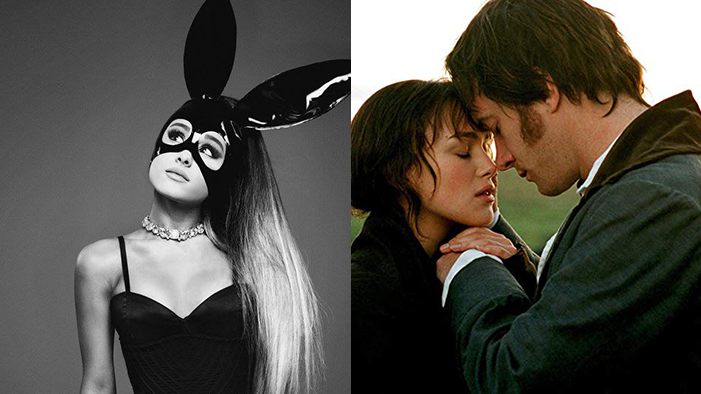We Asked Art Students: Is James Franco’s Art Any Good?
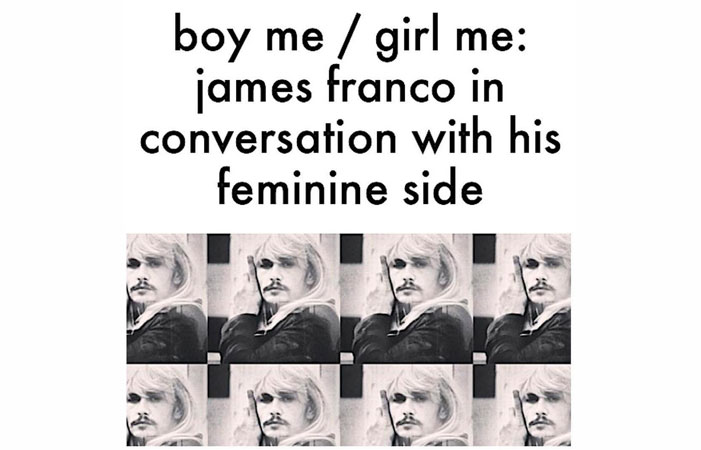 Artist/actor/filmmaker/writer James Franco got more publicity for his art this week when New York Magazine had their chief art critic listen to Franco make a case that he is a serious artist. Did you know he has a PhD in literature? More than four degrees? That he paints and writes poems and takes photos and makes art films?
Artist/actor/filmmaker/writer James Franco got more publicity for his art this week when New York Magazine had their chief art critic listen to Franco make a case that he is a serious artist. Did you know he has a PhD in literature? More than four degrees? That he paints and writes poems and takes photos and makes art films?
Your average art student toils for four years to get a Bachelor of Fine Arts, and additional years to get a Masters or a (yearssss) Doctorate. Then they spend years more perfecting their technique, and exploring their message and role as an artist. Still, they might find themselves in relative obscurity. So it’s easy to understand why many artists resent Franco’s instant visibility in the art world. As a hobby artist myself, I find his proliferation of art vain and pointless (as a point of contrast, consider that Prince apparently has 32 albums he never put out). At the same time, a friend who “studied film under James” thinks he is a genius.
So is there any value to his art? We asked several established artists who have paid their dues in art school or on the road to critique his work according to the rubric their own work is judged by.
DOES HIS WORK SUCK?
Let’s find out…
Painting
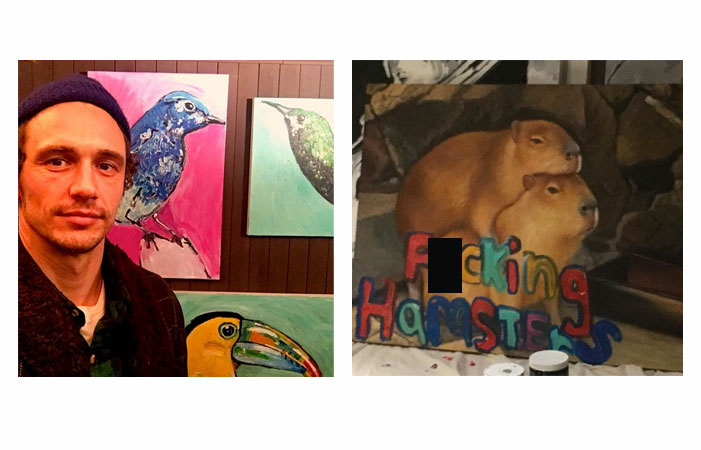
Franco’s “Fat Animals” series was prepared by assistants, who did the realist-style underpainting, on top of which Franco added the final layer and graffiti-like captions. In the hamsters painting, pictured above, the childlike lettering that overlays the painting contrasts the natural/realist color scheme, pop-ifying the picture, but otherwise tells us what we already see: that the hamsters appear to be doing it. The overall feeling is of stasis, due to the muted colors and lack of indicated movement.

Critique: “I don’t how if it’s possible to make cute animals look dead and without souls, but Franco has done just that. Despite attempting to shade and contour the subjects, they appear flat, limp and lifeless, juxtaposing with the elementary scribble adorning them, and with the mission of the project, aka depicting ‘fat’ animals.
Attempted depth in the paintings is unsuccessful, most evident in ‘Fat Stallion,’ where the grass looks like an afterthought, filled in at the end. I feel sorry for these animals.” —Camille, graphic artist, graduate of the College of Fine Arts, University of New South Wales
Poetry

Franco has published chapbooks Hollywood Dreaming: Stories, Pictures, and Poems by James Franco and the “uninhibited” Straight James / Gay James, and contributed poems to Vice. The book Straight James / Gay James was primarily an exploration of the self as subject, but it’s hard to discern an author function other than “the famous guy you have heard of.” So what can we learn from the navel-gazing of a straight, white, famous dude about gender and sexuality constructs?
Angels excerpt
That was a time we had down in F-L-A.
It was something, like with all movies,
That was special, like a bubble, in which
We all lived, a magic time, where we allCame together. This is how it iz on all filmz
But this one was special, because them girlz
Was doin’ sumptin like this fo’ the first time
And they wanted to be rescued, di’n’ they.At first they was excited, and said yes, yes,
Then they was scared, and pulled back,
Because they waz still loyal to all them fanz
Of theirs, the young wunz, impressionable.But then it changed, once again, when I arrived
Because I waz the electricity that shocked dem
Into place, you see how that happened?
They was hot young things with skillz of sexThat I brought to the fore, and galvanized.
Critique: “I have to admit that it’s difficult for me to separate ‘Franco the personality’ from Franco’s writing—it’s difficult, that is, to read something I know is by Franco without immediately wanting to pull it apart.

That said, his poetry is just bad to me. Like, if a student turned in his poem “Angelz” to my workshop, I would use it to make a point about cultural appropriation. I mean, seriously, in this poem, he’s using black vernacular (them girlz / Was doin’ sumptin like this fo’ the first time) in a way that doesn’t seem politically productive. In the poem, he seems to be making fun of hip-hop/rap tropes—their lyrics often set up the world as a kind of perfect, magic place (It was something, like with all movies, / That was special), sexualize women (They was hot young things with skills of sex) and valorize the speaker (I was the electricity that shocked dem)—and, OK, I am on board with calling out musicians for their depictions of women, but, as for the other two points, well, those seem like necessary, defensive reactions for black/minority musicians to have in a country that continually pushes them down. And I don’t see how it is James Franco’s place, as a super-rich, white dude to critique that.
On a technical level, I find the poem pretty clumsy and boring.” —Emma W., poetry teacher and writing fellow at the Iowa Writers’ Workshop
Photography
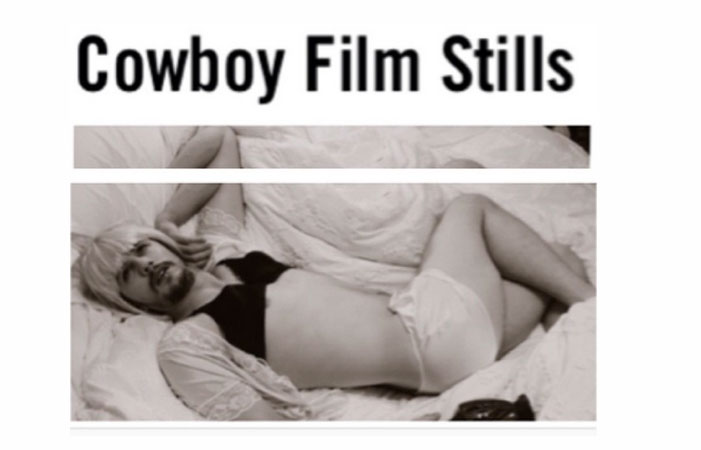
Franco’s best-known photography project is his homage to artist Cindy Sherman’s famous New Film Stills, in which she put on costumes to insert herself into the Hollywood machinery and offer commentary on the portrayal of women in film, and create an energy from the eerie settings that contain the characters. Franco set out, similarly, to “insert himself” as a celebrity into her iconic scenes, ostensibly bringing another layer of irony to the project and playing with his public “personas.”

Critique: “You know, people work their whole life at this stuff to achieve some level of competency and some voice. We all start out as self-important kids with nothing to say and get beaten around into adulthood where we realize we are no longer kids, no longer important and, ultimately, our identities have been whittled raw so that all their is left to say is something that is true. Franco is missing the struggle inherent in those first steps. The funny thing is that’s something endemic to coddled kids. I think it must be a curse to be told you’re a genius so young that you actually believe it as an adult.
He’s got a nice face, but there is no substance to these stills; he doesn’t add anything to Sherman’s original work—there is no critique of anything—so these reproductions are artistically as pointless as walking a cat on a leash.” —Matt, photographer (Time, National Geographic, Mother Jones)
Selfies/Instagram
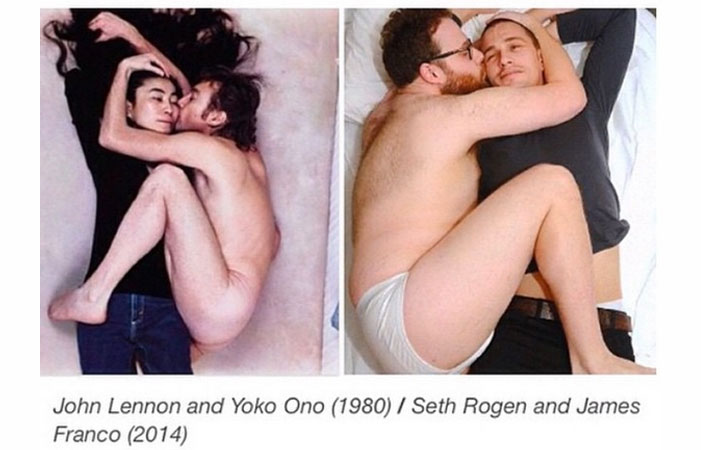
Franco has used his Instagram account to raise questions like “Is James Franco really hitting on a teenager?“, “Is James Franco nude?” and “Is James Franco a creep?” Franco maintains that it is all an act, whereby he, the private artist, uses a public medium to explore a) perceptions of his celebrity, and b) the way in which celebrity operates. He has recreated many famous pictures of celebrities, including Kim Kardashian, Miley Cyrus, and John Lennon(^), in other places crudely cut-and-pasting his head onto art to “participate” in the conversation.

Critique: “Although Franco shows an awareness of his celebrity, there is no commentary on the fact that he chooses *solely* to operate in the public sphere, as opposed to, say, creating and putting out art under a pen name (like JK Rowling/Robert Galbraith), or as a collective (which many artists who use collaborators or assistants do). As such, we are unable to critique his work without taking into account the fact that he has 2.7 million followers on Instagram.
If Andy Warhol set out to demonstrate through his print methods that celebrity was a reproducible commodity pumped out by the Hollywood system, Franco is proving that thesis to be correct, without adding anything to that thesis. In deigning to appear on soap opera General Hospital, despite being a ‘serious actor,’ the joke seems to be on people who act in, write, and watch soap operas, and as such fails to invert our expectations. In bagging degrees faster than you can sweep a layer of paint across a silkscreen, he discounts the value that years of toil and education have. Even if he *earned* his PhD in literature, there necessarily is something lost in the speed with which he tore through a pursuit that is supposed to take a decade.” —Janet, serial grump

So the key takeaways are that a) his painting is technically lacking proficiency as regards realism or integrating different “layers” of thought, b) his poetry is linguistically limited, and presents a muddied/problematic cultural commentary, c) his film stills are reproductions, in the most basic sense, and aim to capitalize on the fame and achievement of another artist without adding to the original work, and d) he is concerned above all about the contrast of the public and private, but fails to offer any thesis on the value of the private self.
Put another way, you can put paint on a canvas, but what makes a piece art? Does Franco’s work pass the bar, beyond the fact that someone agreed to put it in a gallery and curate it?
This is a question you should care about, as students who are busting your asses honing your art.
We want to know your thoughts! Is Franco’s art clever? Self-aware? Awful? Narcissistic? Amateur? Do you think there is technical or conceptual skill at play here?
All images via Instagram/JamesFrancoTV




